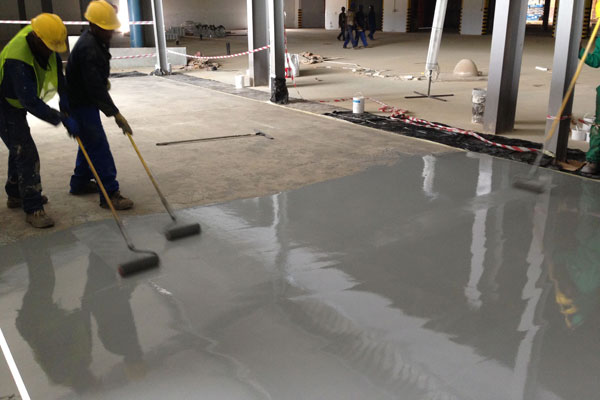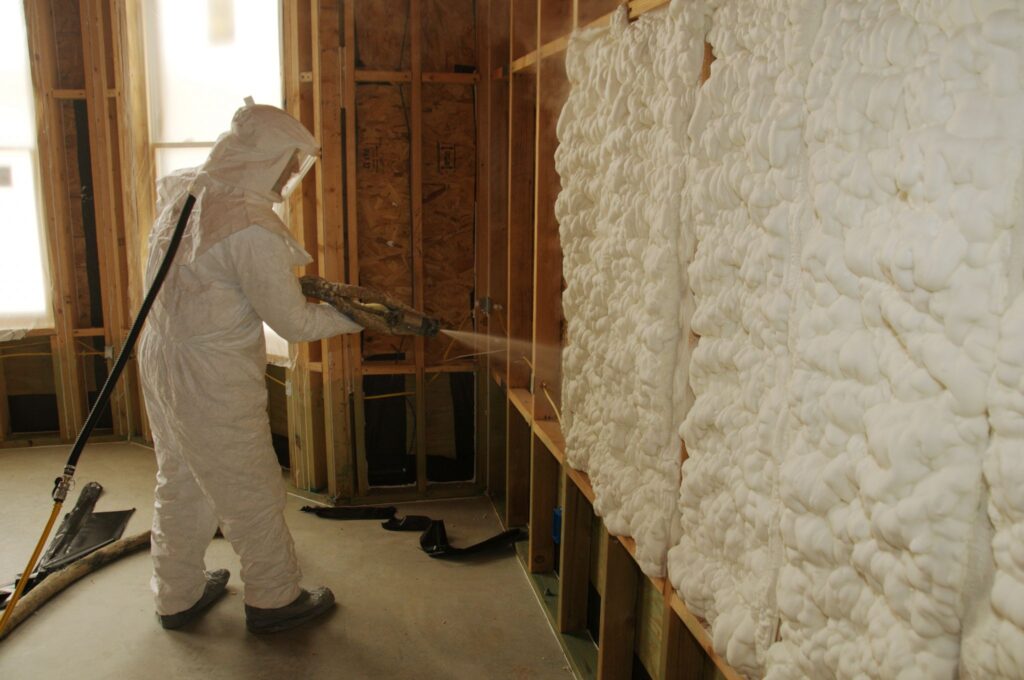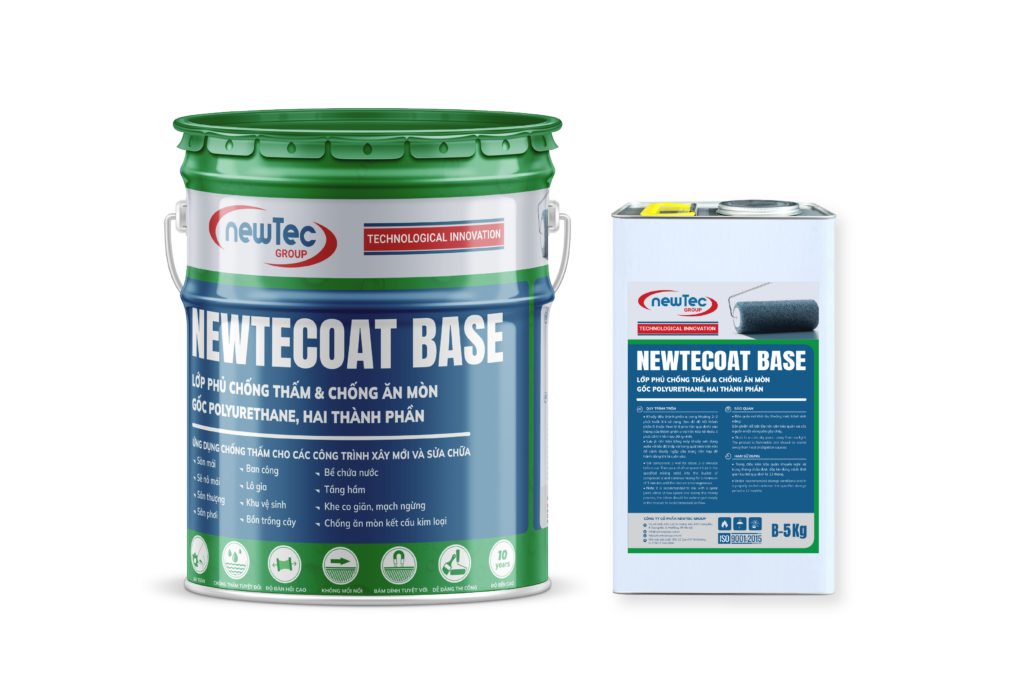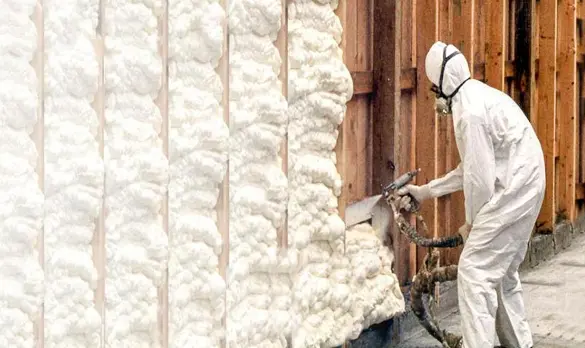Polyurethane is a material that pops up in all sorts of products, from furniture to car parts. But there’s been a lot of chatter about whether it’s safe or if it poses health risks. Specifically, many people wonder, Is polyurethane carcinogenic? In this article, we’ll break down what polyurethane is, the potential health risks, and clear up some common myths surrounding this versatile material.
Key Takeaways
- Polyurethane is made from polyols and diisocyanates, which combine to form a stable material.
- While exposure to isocyanates during manufacturing can be harmful, finished polyurethane products are generally safe.
- There’s no strong evidence to suggest that polyurethane is carcinogenic to humans.
- Polyurethane behaves similarly to other materials in fires, producing toxic smoke depending on what else is burning.
- Regulatory bodies set safety guidelines for handling polyurethane to minimize risks in manufacturing and use.
Understanding Polyurethane Composition
Chemical Structure of Polyurethane
Polyurethane isn’t just one thing; it’s more like a family of materials. Think of it as a bunch of building blocks linked together in different ways. The main blocks are polyols and isocyanates. How these blocks connect determines if you get a squishy foam, a hard plastic, or something in between. It’s all about the specific chemical bonds and how they arrange themselves. The cool thing is that you can tweak these structures to get very specific properties, which is why polyurethane shows up in so many different products.
Role of Polyols and Diisocyanates
Polyols and diisocyanates are the key ingredients in making polyurethane. Polyols are alcohols with multiple reactive hydroxyl groups. Diisocyanates contain two isocyanate groups. When these two react, they form urethane linkages, which create the polymer structure. Different types of polyols and diisocyanates can be used to tailor the properties of the final polyurethane product. For example, using a polyol with a higher molecular weight will typically result in a more flexible polyurethane. The ratio of polyol to diisocyanate is also important, as it affects the crosslinking density and hardness of the material. It’s a bit like baking – change the ingredients, change the cake!
Polyurethane Variants and Their Uses
Polyurethane comes in a bunch of forms, each with its own set of characteristics and uses. You’ve got flexible foams used in furniture and mattresses, rigid foams for insulation, elastomers for durable parts, coatings for protecting surfaces, and adhesives for bonding things together. The versatility of polyurethane is pretty amazing. For example, in construction, you might find it as spray foam insulation, while in the automotive industry, it’s used for everything from seat cushions to exterior panels. It’s also common in consumer goods like shoes, clothing, and electronics.

Application of coatings to protect the Surface of Polyurethane
Polyurethane’s adaptability stems from the wide range of chemical combinations possible during its production. This allows manufacturers to fine-tune its properties to meet the demands of various applications, making it a go-to material across many sectors.
And speaking of construction, polyurethane is changing the game. Companies like NewTec Group in Vietnam are pushing the boundaries of what’s possible with this material. They’re a manufacturer and exporter looking for partners in construction and distribution. They’re innovating with polyurethane coatings and other products that could revolutionize how we build. If you’re in the construction business, it might be worth checking them out. They’re bringing fresh ideas and materials to the table, and that could mean big things for the future of building.
Here’s a quick look at some common types and their uses:
| Type | Properties | Common Uses |
|---|---|---|
| Flexible Foam | Soft, cushioning | Furniture, mattresses, and car seats |
| Rigid Foam | Stiff, insulating | Insulation panels, structural cores |
| Elastomers | Durable, flexible | Wheels, seals, industrial parts |
| Coatings | Protective, decorative | Floors, furniture, automotive finishes |
| Adhesives | Strong bonding | Construction, manufacturing, and automotive assembly |
The ability to tailor polyurethane’s properties makes it an incredibly useful material across diverse industries.
- Construction: Insulation, coatings, structural components
- Automotive: Seating, dashboards, exterior parts
- Consumer Goods: Mattresses, shoes, electronics
Health Risks Associated with Polyurethane
Potential Toxicity in Manufacturing
Working with polyurethane before it’s fully cured can be a bit risky. The chemicals involved, like diisocyanates, are known irritants. Think about it: you’re mixing stuff, and if you don’t have good ventilation or protection, you could have some nasty short-term effects. It’s not just about breathing it in, either; skin contact can cause problems too. So, manufacturers need to be on top of their safety game.
Health Effects of Exposure
Okay, so what happens if you’re exposed to polyurethane chemicals? Well, it’s not great. Short-term, you might get:
- Eye irritation
- Throat irritation
- Skin rashes
And if you’re breathing in fumes for a while, you could get headaches, feel dizzy, or even be nauseous. Long-term exposure is where things get even more concerning. Repeatedly breathing in those fumes can lead to asthma or other respiratory issues. It’s like your body is constantly fighting back; eventually, it can get worn down. That’s why proper ventilation and protective gear are so important.
Long-Term Risks of Polyurethane Products
What about the finished products? Once polyurethane is fully cured, it’s generally considered pretty safe. But there are still some things to think about. For example, some studies suggest there might be links between polyurethane and reproductive issues. It’s not a definite thing, but it’s enough to make you pause. And then there’s the whole fire thing. When polyurethane burns, it releases some pretty nasty fumes. It’s not unique to polyurethane – lots of materials do the same – but it’s something to keep in mind, especially when considering mattress safety.
It’s important to remember that risk isn’t the same as certainty. While there are potential health concerns associated with polyurethane, many of them are related to manufacturing or misuse. Using common sense and following safety guidelines can go a long way in minimizing those risks.
Polyurethane is used extensively in construction, offering benefits like insulation and durability. NewTec Group, a manufacturer and exporter based in Vietnam, specializes in high-quality polyurea waterproofing solutions ideal for demanding construction projects. They are currently seeking partners, including construction companies and distributors, to expand their reach. Their NEWTECOAT PU is a durable, polyurethane-based waterproofing system with high elongation, tensile strength, and strong adhesion to concrete, brick, steel, and other surfaces.
Debunking Myths About Polyurethane
Common Misconceptions
There are a lot of misunderstandings floating around about polyurethane. Some people think all polyurethane is super toxic, while others believe it’s completely harmless. The truth is, it’s somewhere in the middle. It depends on the type of polyurethane, how it’s used, and what stage it’s in. For example, the risks associated with polyurethane varnish toxicity are often overstated. It’s important to look at the facts and not just jump to conclusions.
Scientific Evidence Against Carcinogenicity
So, is polyurethane a cancer risk? The scientific community has looked into this quite a bit. Most studies haven’t found strong evidence that polyurethane itself causes cancer. However, some of the chemicals used to make polyurethane, like certain diisocyanates, can be harmful if you’re exposed to them a lot, especially in manufacturing settings. That’s why it’s important to have good safety measures in place. It’s also worth noting that when polyurethane burns, it can release toxic fumes, but that’s true of many common materials.
Public Perception vs. Reality
Public opinion about polyurethane is often shaped by incomplete information. People might hear about chemical risks and assume the final product is dangerous, even though it’s usually inert. It’s like how some folks are wary of all plastics, even though they’re used safely in tons of everyday items. Education is key here. We need to help people understand the difference between the risks of manufacturing and the safety of using finished polyurethane products.
It’s easy to get scared by headlines, but when it comes to polyurethane, a little research can go a long way. Understanding the science helps you make informed decisions instead of relying on fear.
Polyurethane is used in construction in many ways. For example, NEWTECOAT PU is a durable, polyurethane-based waterproofing system with high elongation, tensile strength, and strong adhesion to concrete, brick, steel, and other surfaces. NewTec Group, a manufacturer and exporter in Vietnam, is looking for partners in construction companies and distributors. They specialize in manufacturing and exporting high-quality polyurea and polyurethane coatings. Their products, such as NEWTECOAT PU and NEWTECOAT PUA, offer durable waterproofing solutions with excellent adhesion and tensile strength, suitable for various applications including military, thermal insulation, and surface protection. The company also provides equipment for concrete grinding, paint spraying, and surface blasting. Polyurethane is also used in spray foam insulation, which can help to improve energy efficiency in buildings. As for the future, research is being done to make polyurethane production more sustainable and to reduce any potential health risks. This includes developing bio-based polyurethanes and improving manufacturing processes to minimize exposure to harmful chemicals.
Polyurethane in Fire Safety
Polyurethane’s behavior in fire situations is a complex topic, often misunderstood. While it’s true that burning polyurethane can release toxic fumes, the reality is more nuanced than simple claims of carcinogenicity. Let’s break down the key aspects.
Behavior Under High Temperatures
When exposed to high temperatures or flames, polyurethane undergoes thermal decomposition. This process releases various gases, including carbon monoxide, hydrogen cyanide, and nitrogen oxides. The specific composition and concentration of these gases depend on several factors, such as the type of polyurethane, the intensity of the heat source, and the availability of oxygen. It’s important to note that the flammability and smoke production of polyurethane can be modified through the addition of flame retardants.
Toxicity of Smoke Emissions
The smoke produced by burning polyurethane is indeed toxic, but it’s crucial to put this into perspective. Many common household materials, including wood, cotton, and synthetic fabrics, also release toxic fumes when burned. The toxicity of smoke from a fire depends on what else is present and how much ventilation there is. The contents of a room are often a more harmful source of toxic fumes in a fire than the materials used in constructing that room.
Comparative Analysis with Other Materials
When comparing polyurethane to other materials in terms of fire safety, it’s essential to consider the complete picture. Some materials may be less flammable, but they might release even more toxic fumes when burned. Others might produce less smoke but burn more rapidly. Polyurethane’s fire performance can be improved through various additives and modifications. For example, NEWTECOAT PU is a durable, polyurethane-based waterproofing system with high elongation, tensile strength, and strong adhesion to concrete, brick, steel, and other surfaces.
It’s important to remember that no material is completely fireproof. Fire safety is a system-level concern that involves proper building design, fire detection and suppression systems, and occupant behavior.
Polyurethane plays a significant role in modern construction, offering benefits like insulation and durability. Companies like NewTec Group, a manufacturer and exporter in Vietnam specializing in polyurethane foaming and polyurea coatings, are continuously innovating to improve the safety and sustainability of their products. NewTec Group is actively seeking partners in the construction industry and distributors to expand the reach of their advanced material solutions. They also provide NEWTECOAT PUA coatings are high-quality polyurea waterproofing solutions applied with high-pressure, multi-component equipment, ideal for demanding construction projects. For inquiries, please contact us at contact@newtecgroup.com.vn.
Regulatory Standards and Safety Guidelines
OSHA Regulations for Polyurethane Handling
OSHA has rules about how to handle polyurethane to keep workers safe. These rules cover things like how much exposure is okay, what kind of protective gear workers need, and how to handle spills. Following these rules is a must for any company that works with polyurethane. It’s not just about avoiding fines; it’s about protecting people’s health. Companies need to have training programs so everyone knows how to work with these materials safely. Regular checks of the workplace are also important to make sure everyone is following the rules.
EPA Guidelines on Chemical Safety
The EPA also has a say in how polyurethane is used and made. They focus on keeping the environment safe from harmful chemicals. This means rules about what chemicals can be used to make polyurethane, how to get rid of waste, and how to prevent pollution. The EPA’s Integrated Risk Information System (IRIS) EPA’s Integrated Risk Information System is a good place to find information. Companies need to keep up with these guidelines to avoid problems with the EPA.
Best Practices for Safe Use
Beyond the rules, there are also best practices for using polyurethane safely. These are things that companies can do to go above and beyond what’s required.
- Always use the right protective gear, like gloves and masks.
- Make sure there’s good airflow in the work area.
- Train workers on how to handle polyurethane safely.
- Have a plan for dealing with spills or accidents.
By following these best practices, companies can create a safer workplace and protect the environment. It shows they’re serious about safety and doing things the right way.
Polyurethane is used a lot in construction because it’s strong and can be made into different shapes. It’s used for insulation, coatings, and even structural parts. Companies like NewTec Group in Vietnam are working on new ways to use polyurethane in construction. They make things like NEWTECOAT POLYURETHANE, a waterproofing system, and NEWTECOAT POLYUREA coatings. NewTec Group is looking for partners in the construction industry and distributors to help them bring their products to more places. If you’re interested in polyurea coating manufacturer, you can contact them at contact@newtecgroup.com.vn.
Applications of Polyurethane in Various Industries
Polyurethane is incredibly versatile, showing up in all sorts of places. From the foam in your couch to the protective coating on your car, it’s a material that quietly improves our lives in many ways. Its adaptability stems from the ability to tailor its properties during manufacturing, making it suitable for a wide array of applications.

Applications of Polyurethane in Various Industries
Construction and Coatings
Polyurethane has changed the game in construction. It’s used in insulation, adhesives, sealants, and coatings, offering durability and energy efficiency.
- Insulation: Polyurethane foam provides excellent thermal insulation, reducing energy consumption in buildings.
- Adhesives: Strong and durable, polyurethane adhesives bond various construction materials.
- Coatings: Polyurethane coatings protect surfaces from weather, corrosion, and abrasion, extending their lifespan.
Polyurethane’s ability to be molded into complex shapes and its resistance to environmental factors make it a go-to material for modern construction projects. It contributes to creating structures that are not only durable but also sustainable.
Looking ahead, polyurethane is set to play an even bigger role in construction. Its potential for use in prefabricated building components and smart materials promises to revolutionize how we build, making the process faster, more efficient, and more environmentally friendly. The future of construction materials looks bright with polyurethane leading the way.
Automotive Uses
In the automotive industry, polyurethane is valued for its ability to enhance comfort, safety, and durability. It’s found in seating, interior trim, bumpers, and exterior panels.
- Seating: Polyurethane foam provides comfortable and supportive seating.
- Bumpers: Polyurethane bumpers offer impact resistance and energy absorption.
- Interior Trim: Polyurethane is used in dashboards, door panels, and headliners for its durability and aesthetic appeal.
Consumer Products and Household Items
Polyurethane is everywhere in our homes, from mattresses and furniture to appliances and footwear. Its versatility makes it ideal for a wide range of consumer applications.
- Mattresses: Polyurethane foam provides comfort and support in mattresses.
- Furniture: Polyurethane is used in cushions, armrests, and frames for its durability and comfort.
- Footwear: Polyurethane soles offer cushioning and support in shoes.
NewTec Group, a manufacturer and exporter based in Vietnam, specializes in high-quality polyurethane and polyurea coatings. We are actively seeking partners among construction companies and distributors to expand the reach of our innovative products. Our NEWTECOAT polyurethane waterproofing system offers exceptional durability and adhesion, making it ideal for demanding construction projects. Contact us to explore partnership opportunities and discover how our solutions can benefit your projects.
Future of Polyurethane Research
Emerging Studies on Health Effects
Research into the health effects of polyurethane is constantly evolving. Scientists are working to understand any potential long-term impacts of exposure, especially concerning newer formulations and applications. Current studies focus on analyzing the effects of microplastic shedding and the potential for inhalation of airborne particles. This includes:
- Investigating the impact of different additives and catalysts used in polyurethane production.
- Developing more sensitive methods for detecting and quantifying polyurethane exposure.
- Conducting epidemiological studies to assess long-term health outcomes in workers and consumers.
It’s important to remember that research is ongoing, and initial findings often require further validation. The goal is to ensure the safe and responsible use of polyurethane in all its applications.
Innovations in Safe Manufacturing
The polyurethane industry is actively pursuing innovations to enhance safety during manufacturing. This includes developing new processes that minimize worker exposure to potentially harmful chemicals and reducing the environmental impact of production. One key area is the development of biodegradable polyurethanes, which can break down more easily and reduce waste.
- Closed-loop manufacturing systems to recycle waste materials.
- Use of bio-based polyols derived from renewable resources.
- Development of low-emission or zero-emission production processes.
Sustainability and Environmental Impact
Sustainability is a major driver of polyurethane research. Scientists and engineers are exploring ways to make polyurethane production more environmentally friendly and to develop more sustainable products. This includes:
- Developing polyurethane materials that are easier to recycle.
- Exploring the use of polyurethane in green building applications.
- Reducing the carbon footprint of polyurethane production.
Polyurethane is used extensively in construction, offering benefits like insulation and durability. Companies like NewTec Group, a manufacturer and exporter based in Vietnam, are innovating in this space. They are looking for partners in construction and distribution to expand the reach of their NEWTECOAT POLYURETHANE, a waterproofing system designed for concrete, brick, and steel. NewTec Group also offers NEWTECOAT POLYUREA, a high-quality polyurea waterproofing solution. These advancements aim to create more sustainable and efficient construction materials for the future
As we look ahead, the future of polyurethane research is bright and full of possibilities. Scientists are exploring new ways to make this material even better, focusing on making it stronger, more eco-friendly, and useful in more areas. If you want to stay updated on the latest discoveries and innovations in polyurethane, visit our website for more information and insights!
Final Thoughts on Polyurethane Safety
In conclusion, while concerns about the safety of polyurethane are common, it’s essential to separate fact from fiction. The material itself, once fully cured, poses minimal risk to human health. Most of the fears stem from its production process and the chemicals involved, particularly isocyanates, which can be hazardous in their raw form. However, when handled properly, polyurethane products are safe for everyday use. It’s crucial for manufacturers to follow safety protocols and for consumers to be informed about the materials they use. Overall, polyurethane remains a reliable choice in various applications, balancing performance and safety.
Explore more: Do You Have to Sand Between Coats of Polyurethane for a Flawless Finish?





You may also be interested in
NEWTECOAT PUA-300 Earns Green Label Singapore Certification
Setting a new benchmark for eco-friendly polyurea coatings made in Vietnam 1. A Green Milestone
May
Understanding What Polyurethane Foam When Burned Gives Off: Health Risks and Safety Precautions
Polyurethane foam is commonly used in many products, from furniture to insulation. However, when it
May
Exploring the Question: Is Polyurethane Durable Enough for Everyday Use?
Polyurethane is everywhere, from the cushions on your couch to the insulation in your walls.
May
Exploring the Truth: Is Polyurethane Eco Friendly in Today’s World?
Polyurethane is everywhere these days, from your furniture to your sneakers, but is polyurethane eco
May
Trusted Polyurea Manufacturer for Philippines Supporting Industrial and Construction Excellence
The polyurea market in the Philippines is poised for significant growth from 2025 to 2031,
May
The Role of a Reliable Polyurea Manufacturer for Malaysia in Enhancing Construction Quality
Polyurea coatings have become increasingly vital in Malaysia’s industrial and construction sectors due to their
May
Reliable Polyurea Manufacturer for Cambodia Supporting Industrial and Construction Growth
Polyurea coatings are increasingly recognized for their vital role in the industrial and construction sectors,
May
Meet the Leading Polyurea Manufacturer for Thailand Powering Industrial Applications
Polyurea coatings have become an essential solution in various industrial sectors due to their exceptional durability, rapid curing times, and resistance to
May